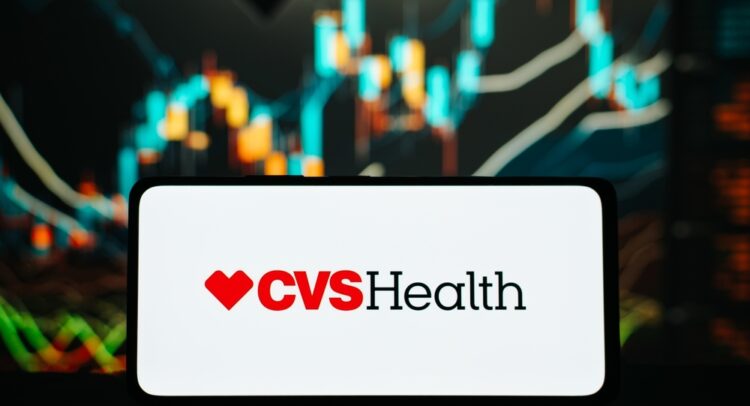CVS Health (CVS) is a top S&P 500 performer in 2025, with year-to-date returns exceeding 50%. Moreover, the stock has shirked off Trump-mania, tariff levies, and a global trade war like water off a duck’s back. The stock is up 3% over the past five days and up 42% since January — wholly opposed to the market squall enveloping the world’s major stock indices and shaving trillions from index valuations, in recent days.
Most recognizable for its corner drugstores, CVS’ transformative acquisition of Aetna, a major health insurer, expanded its healthcare footprint despite current profitability challenges. While higher medical costs and utilization have significantly impacted this segment, the Centers for Medicare & Medicaid Services (CMS) decision to increase Medicare Advantage payment rates by 5% in 2026 puts wind in CVS’ sails. Its diversified revenue mix and growing insurance offerings (with membership up 1.4 million to 27.1 million) make me cautiously bullish on CVS’s long-term prospects.
Medicare Advantage Woes and Recovery
CVS is the third-largest Medicare Advantage Provider behind UnitedHealth (UNH) and Humana (HUM). While its Health Care Benefits segment saw 23% year-over-year revenue growth in 2024 to reach $33 billion, it turned to an operating loss of $439 million in 2024 from an operating income of $676 million in the previous year.
CVS attributed this to “increased utilization, the unfavorable impact of the Company’s Medicare Advantage star ratings for the 2024 payment year, and the impact of higher acuity in Medicaid following the resumption of redeterminations.” Given that the segment makes up nearly one-third of total revenues, the inability to turn a profit from it weighs heavily on the bottom line.

Earlier this week, fortunes changed for CVS when the CMS announced that government payments to Medicare Advantage programs will increase 5.06% on average, considerably higher than previous estimates. The company’s Aetna unit currently has 88% of its Medicare Advantage members enrolled in highly-rated plans. Why does this matter? Plans rated four stars or higher receive significant bonus payments from CMS. Recall that in 2023, only 21% of its members enrolled in plans with four or more stars. So, this will have a compounding effect on CVS. The star rating bonuses function as multipliers on top of the base rate increase.
CVS anticipates a membership decline of over 1 million in 2025 due to reductions in individual exchange and Medicare products. This is a strategic reduction to combat substantial historical individual exchange losses. In February, CVS projected an operating income of at least $1.5 billion in 2025 in this segment and noted that each trend point is worth approximately $800 million. So, this implies an additional $700 million in income from this segment when the rate takes effect in 2026.

The Steady Backbone of CVS’s Ecosystem
CVS’s Health Services segment, including CVS Caremark (pharmacy benefit management), Cordavis (biosimilars unit), Signify Health (home health assessments), and MinuteClinic (retail health clinics), is arguably the most steady of its three business units and makes up nearly half of total revenues.
This segment is central to CVS’s long-term strategy of building a vertically integrated healthcare ecosystem. In this segment, revenues decreased 7.1% in 2024 to $47 billion. This was predominantly due to a notable decrease in pharmacy claims processed due to a large customer loss.
The segment is still profitable, achieving $1.8 billion in adjusted operating income in 2024. The health giant is making significant investments, spending nearly $20 billion acquiring Signify Health and Oak Street Health in 2023. The latter focuses on Medicare Advantage patients and should, too, benefit from the CMS rate increase for 2026.
Is CVS Health a Good Stock to Buy?
According to Wall Street, CVS stock has a consensus rating of Strong Buy based on 17 Buy, two Hold, and zero Sell ratings in the past three months. CVS’s average price target of $73.89 per share implies a 9% upside potential over the next twelve months.

Last month, Mizuho analyst Ann Hynes highlighted the “embedded earnings power of the company” as she raised the price target on CVS from $58 to $70 per share while maintaining an Outperform rating. This likely also points to the potential for margin improvement in the Medicare Advantage business starting this year and accelerating into the next with the CMS rate increase. Moreover, CVS’s synergies between different business segments can drive additional revenue and cost efficiencies over time.
Emerging Healthcare Ecosystem with Catalysts Ahead
CVS’s transformation into a vertically integrated healthcare ecosystem is still taking shape. After years of underperformance, its Aetna business is turning around just before CMS rate increase tailwinds position the segment for substantial revenue growth. Meanwhile, while struggling with pharmacy claims, its Health Services segment continues to be profitable and forms the backbone of CVS’s integrated healthcare vision.
Conversely, high-single-digit declines in Medicare Advantage membership spoils some of the splendor from the rate increases. Moreover, while the increased rates will inspire profitability, high medical costs continue to squeeze margins in this segment.
All things considered, I think CVS offers an attractive combination of near-term catalysts and long-term strategic vision. Its current valuation may still undervalue its earnings potential as synergies between its retail, insurance, and healthcare service businesses continue to evolve in the coming years.

















